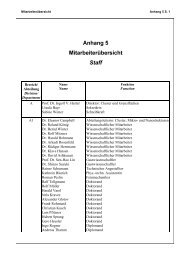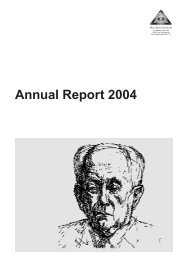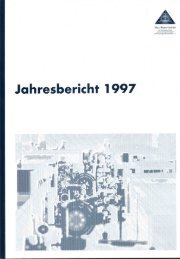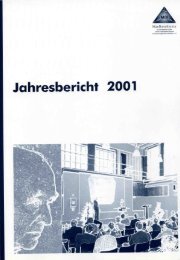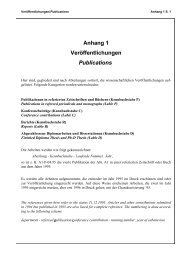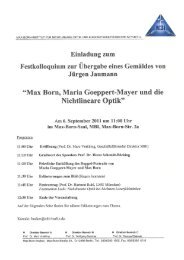You also want an ePaper? Increase the reach of your titles
YUMPU automatically turns print PDFs into web optimized ePapers that Google loves.
38<br />
Fig. 7<br />
One-dimensional cut through<br />
the potential in Fig 6. In this<br />
simpler picture I include the<br />
electron wave function. It has<br />
two parts, the part trapped<br />
by the ion and the part that<br />
is pulled free of the ion – called<br />
a wave packet.<br />
The likelihood of<br />
re-collision<br />
<strong>Max</strong> <strong>Born</strong> • Paul Corkum<br />
is driven so strongly by the light field and returns to the atoms so quickly after its birth that it<br />
can hardly miss! Still, in science, it is important to measure to make sure.<br />
In quantum mechanics, the way measurements are made determines what we can learn about<br />
the object that we measure. We start with a hydrogen molecule. Although we do not know if<br />
the electron makes it through the beam-splitter (ie, ionizes), the molecule itself can tell us – if<br />
we measure a hydrogen molecular ion, then we know that the molecule ionized. The molecule<br />
can tell us even more. Whenever the electron is removed from the hydrogen molecule,<br />
one of the two electrons binding hydrogen is removed. With that one electron gone, the bond<br />
weakens. The molecular ion stretches. That is, it starts to vibrate much like a vibrating quartz<br />
crystal in a watch, or the oscillation of a pendulum in a grandfather clock. In other words,<br />
removing the electron starts a clock ticking – starts a stopwatch [10].<br />
If the removed electron re-collides with the ion, it can dislodge the one remaining electron.<br />
Should this occur, the vibration ceases – the watch stops ticking – and the molecule is transformed<br />
into two hydrogen ions in close proximity. We are interested in the delay between ionization<br />
and re-collision and the likelihood that re-collision will occur.<br />
We determine the probability of re-collision by comparing the number of atomic hydrogen ions<br />
that are produced to the total number of ionization events.<br />
Since we know that like charges repel and that the kinetic energy they gain depends on how<br />
close they were to each other when the second electron was dislodged, measuring the ion’s<br />
kinetic energy reveals how far they were separated when the re-collision occurred (in other<br />
words, measuring the delay between ionization and re-collision).<br />
Figure 9 shows a light wave on which we have superimposed the time and probability of the<br />
re-collision. For illustration purposes, the figure assumes that ionization occurred near the field<br />
maximum represented by the arrow. In the language of “collision physics,” we use the term<br />
“current density,” by which we mean the electrical current per unit area of an electron beam<br />
that would be needed to simulate the re-collision. The current density is closely related to the<br />
time dependent probability of an electron ion re-collision. The solid curve is from a simulation.<br />
The data points (not shown here, but available in [10]) are obtained by reading the molecular<br />
clock. The electron is most likely to return about 1.7 femtoseconds after it has left, and most<br />
of the probability of the electron re-colliding is confined to about 1 femtosecond (1000 attoseconds).



